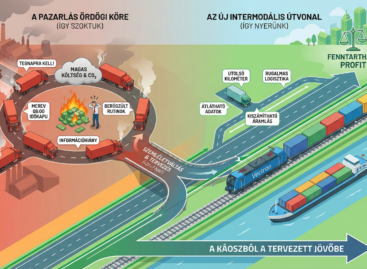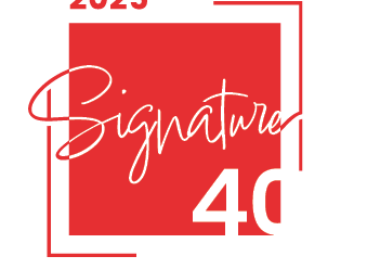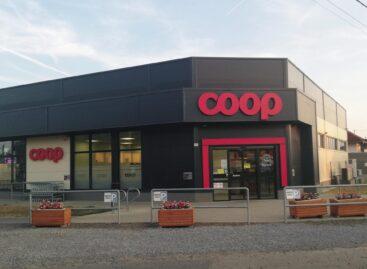Display 2.0 – the sales floor of the future
In-store display is becoming a smart device – we could learn at Shop! Global Retail Trade Association’s April webinar, where Bram van Schijndel Tromp, the CEO of Pure Value Europe NV presented the next generation of in-store promotional systems.
This article is available for reading in Trade magazin 2025/5.
Pure Value’s approach is to think together and redesign the entire supply chain. This is based on a next-generation modular, foldable and reusable display system, coupled with data collection supported by weight sensing and IoT technology.
Standard frame, branded exterior
A co-creation process started nine years ago, during which manufacturers, brands, retailers and logistics operators worked together to develop a new promotional approach. The aim was to create a system that could be adapted to all store formats, but could be customised for each brand and would allow the effectiveness of promotions to be measured. One of the key questions was: how to use a common display so that brands such as Coca-Cola and PepsiCo are visually distinct from each other? The solution: the physical frame is the same, but the sleeves that carry the brand identity can be interchanged. The resulting device – called Proteus – is a lightweight, one-piece stackable display with adjustable shelf height that requires only 1kg of cardboard, compared to the traditional 5-10 kg. Its durability is outstanding and the next generation IoT sensor system is integrated in all new Proteus units, tracking when and for how long the display is out, detecting if the shelves haven’t been properly stocked, etc.
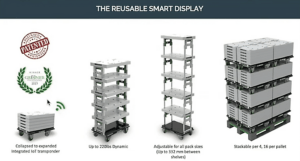
Proteus display is foldable, stackable with adjustable shelf height, and integrated IoT sensor system
Data-driven promotion, controlled demand
In a test performed with the Jupiler brand, the sensors showed that half of the units were sold out within a week and 76% within two weeks. The system also indicated if a display was out too early or too long – the latter is particularly problematic because it can lead to a “forward buying” effect: shoppers pre-load, so they don’t buy again for weeks after the promotion. Real-time data allows you to optimise promotional periods, fine-tune campaign length and volume plans, and tailor planning to store size and region – maximising efficiency and minimising waste. Proteus display’s real-time data feed makes possible the evaluation of promotions and to take immediate action if necessary.
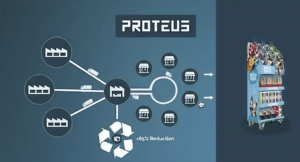
Proteus works with a joint logistics system: the reusable devices are centrally handled, brands are also expected to provide the interchangeable elements off – this way cardboard use may be decreased by 85 per cent
We can also save a lot on logistics
One of the biggest innovations of the new solution is that Proteus isn’t a one-off campaign tool, but works as a kind of “rack-as-a-service model”. For example the supermarket chain Jumbo uses it as a permanent end-stand: the rack stays in the store and only the cover is changed every week. This greatly simplifies logistics: no more transport, storage and collection of equipment is necessary. Jumbo’s experience is that a single display can serve up to 50 promotions per year. The next stage of development is a digital marketplace where brands can book promotional display space online. Feedback data shows that Proteus displays are more sustainable than traditional cardboard displays after just 13 uses: the result is 85% less cardboard and 50-90% lower CO2 footprint. //
Related news
Scientific compass in logistics: Logistics Yearbook 2026 published
🎧 Hallgasd a cikket: Lejátszás Szünet Folytatás Leállítás Nyelv: Auto…
Read more >Univer is building on export-led growth
🎧 Hallgasd a cikket: Lejátszás Szünet Folytatás Leállítás Nyelv: Auto…
Read more >The most expensive mistake in logistics is the “it’s the way we used to do it” mentality
🎧 Hallgasd a cikket: Lejátszás Szünet Folytatás Leállítás Nyelv: Auto…
Read more >Related news
Signature 40 – the region’s new common language: An interview with founders Márton Nagy and Ádám Vaszary on the new dimension of the Signature Platform in 2026
🎧 Hallgasd a cikket: Lejátszás Szünet Folytatás Leállítás Nyelv: Auto…
Read more >Superbrands celebrated again in 2025
🎧 Hallgasd a cikket: Lejátszás Szünet Folytatás Leállítás Nyelv: Auto…
Read more >László Pekó: “Coop isn’t just a network, it is a way of life – and has been for 30 years”
🎧 Hallgasd a cikket: Lejátszás Szünet Folytatás Leállítás Nyelv: Auto…
Read more >


